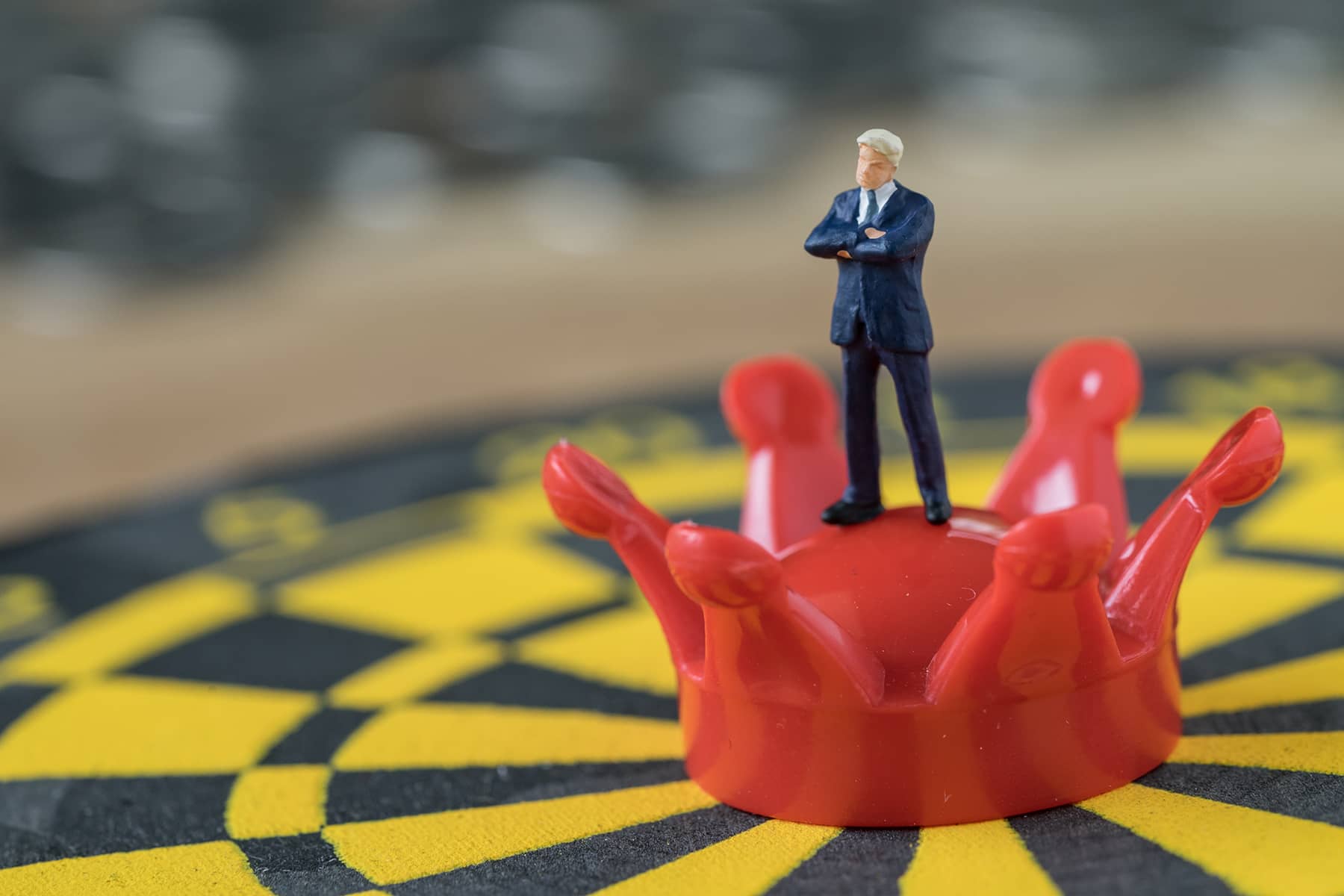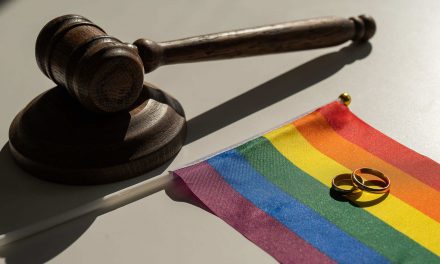
America was never intended to have kings or queens, unaccountable to the people, ruling for life. But that is what we have, because Congress and the White House never seriously pushed back against a power grab executed by the Supreme Court itself.
It is time to reduce the Court’s power in a way that agrees with the Constitution. We’ll almost certainly have to wait until the next time Democrats control the House, Senate, and White House, but that could happen in another 20 months, so we need to start planning now.
I am proposing Congress change the rules of how the Court operates around decisions in which they invoke the Constitution to change or strike down laws. Instead of operating along partisan majority lines, I’m suggesting they must have an absolute consensus — a unanimous decision — on any decisions involving the U.S. Constitution.
The Supreme Courts of Belgium, France, and Italy work this way by law and those of Germany and Spain do so by tradition. It has served those nations well, stripping politics and partisanship out of their judicial systems.
Even Alexander Hamilton and James Madison knew how toxic an out-of-control Supreme Court could be. We need to put some guard rails around the Court’s ability to act politically, and this would be a great place to start.
Nowhere in the Constitution does it say decisions must be issued exclusively by majority opinion; it does, however, say in Article III, Section 2 that Congress has the power to “regulate” the Supreme Court.
I’m proposing a regulation that would require a majority for non-constitutional questions and an absolute consensus for all decisions involving any interpretation of the Constitution. There’s plenty of fascinating history that supports this argument.
From the founding of our republic in 1789 until 1803, the Supreme Court was only the final court of appeals in normal civil and criminal cases. After all, the buck had to stop somewhere.
“But what about the Court deciding the Constitution says we can own guns or can’t get an abortion?” you may ask.
The simple fact is that there’s no explicit reference in the Constitution about the Court deciding what the Constitution says, and there was only little discussion of it during the Constitutional Convention of 1787.
Nonetheless, in 1803 the Supreme Court decided that it, and it alone, could instantly overthrow, edit, or even rewrite laws passed by Congress and signed by the president. All based on its own unique interpretation of the plain language of the constitution.
This was not what most of the Founders and Framers intended.
In 1788, when James Madison and Alexander Hamilton published a long series of newspaper articles promoting to the American people the idea that they should ratify the Constitution (today we call them The Federalist Papers), Hamilton took on the job of selling Article III, which created the court system, including the Supreme Court.
In that sales pitch, Hamilton, on May 28, 1788, wrote in a newspaper article we today call the Federalist no. 78, that the courts, including the Supreme Court, were the weakest of the three branches created by the Constitution. After all, at that time it wasn’t envisioned that they would ever have the power to strike down laws passed by Congress.
“[T]he judiciary is beyond comparison the weakest of the three departments of power,” he wrote, adding in the same sentence that “it can never attack with success either of the other two [branches].”
He even footnoted that sentence with a quote from the famous French judge Montesquieu, who had first clearly articulated the idea of a separation of powers between governmental branches as a check and balance. Hamilton’s footnote read:
“The celebrated Montesquieu, speaking of them, says: ‘Of the three powers above mentioned, the judiciary is next to nothing.’”
He explained why the Court’s judges had lifetime appointments and the judiciary had its own section of the Constitution, writing in the Federalist, no. 78:
“[F]rom the natural feebleness of the judiciary, it is in continual jeopardy of being overpowered, awed, or influenced by its co-ordinate branches.”
The lifetime appointments and Montesquieu’s “separation of powers” would insulate the Court from being “overpowered, awed, or influenced” by the president or Congress.
But some Americans (and many of the newspapers of the day) weren’t convinced; the idea of lifetime appointments and being a branch of government independent from the other two sounded too much like Supreme Court justices could seize enough power to resemble the European monarchies that the colonists had just fought a revolutionary war against.
“What would prevent the Supreme Court from rising up and taking over the country?” they asked. “You’re concentrating too much power in one branch!” others essentially said.
So, a month later, in June 1788, Hamilton published what is now known as the Federalist, no. 81, directly answering their objections, again arguing that the Supreme Court couldn’t make laws and couldn’t strike down laws.
First, he cited (rather accurately) the objections to the Supreme Court he was pushing, noting that opponents of the Constitution were concerned that Supreme Court justices — dangerously! — might interpret the Constitution in a way of their own personal or partisan choosing.
“The arguments,” Hamilton wrote, “or rather suggestions, upon which this charge is founded, are to this effect: The authority of the proposed Supreme Court of the United States, which is to be a separate and independent body, will be superior to that of the legislature. The power of construing the laws according to the SPIRIT of the Constitution, will enable that court to mould them into whatever shape it may think proper; especially as its decisions will not be in any manner subject to the revision or correction of the legislative body. This is as unprecedented as it is dangerous.”
Having set up the objections/concerns, he then answered those doubters in the next paragraph.
“In the first place, there is not a syllable in the plan under consideration which DIRECTLY empowers the national courts to construe the laws according to the spirit of the Constitution, or which gives them any greater latitude in this respect than may be claimed by the courts of every State.” (Emphasis his.)
He also pointed out, in the next paragraph, that even if the Court were to rule on the meaning of a poorly written law (or even corruptly distort a law’s meaning) in deciding a case, the legislature could simply write a new law clarifying what they meant and the new law would apply for the future:
“A legislature, without exceeding its province . . . may prescribe a new rule for future cases.”
Still, people were concerned that the Court would have too much power. What if they started striking down laws passed by Congress and signed by the president, both elected by We the People, while the justices were merely appointed?
Hamilton’s answer in Federalist no. 81 was that the Constitution itself prevented such an abuse of power, because the Supreme Court was explicitly subordinate to Congress.
“We have seen that the original jurisdiction of the Supreme Court would be confined to two classes of causes, and those of a nature rarely to occur [arguments between the states, and treaties with other nations]. In all other cases of federal cognizance, the original jurisdiction would appertain to the inferior tribunals; and the Supreme Court would have nothing more than an appellate jurisdiction, ‘with such EXCEPTIONS and under such REGULATIONS as the Congress shall make.’” (Emphasis his.)
If that wasn’t clear enough, in the next sentence Hamilton essentially repeated himself.
“To avoid all inconveniences, it will be safest to declare generally, that the Supreme Court shall possess appellate jurisdiction both as to law and FACT, and that this jurisdiction shall be subject to such EXCEPTIONS and regulations as the national legislature may prescribe. This will enable the [rest of the] government to modify it in such a manner as will best answer the ends of public justice and security. (Emphasis his.)
He similarly noted in the Federalist, no. 78:
“Nor does this conclusion by any means suppose a superiority of the judicial to the legislative power. It only supposes that the power of the people is superior to both; and that where the will of the legislature, declared in its statutes, stands in opposition to that of the people, declared in the Constitution, the judges ought to be governed by the latter rather than the former.”
Thus, right up until 1803, nobody was really sure how much power the Supreme Court had, but everybody was pretty sure it was very, very limited.
But in the past century, the Court has, in many ways, become the most powerful branch of the federal government and they’re neither elected nor subject to any meaningful oversight from Congress, the president, or We the People. This is both dangerous and wrong.
Back in 1803 in the case of Marbury v Madison, the U.S. Supreme Court took onto itself a power not given it by the Constitution: the ability to strike down or modify laws passed by Congress and signed by the President.
Thomas Jefferson was president that year and he flipped out. He bluntly expressed his concern to his old friend Judge Spencer Roane, the son-in-law of Patrick Henry and a justice of the Virginia Supreme Court:
“If this opinion be sound,” Jefferson wrote, “then indeed is our Constitution a complete felo de se [a suicide pact]. For intending to establish three departments, coordinate and independent, that they might check and balance one another, it has given, according to this opinion, to one of them alone, the right to prescribe rules for the government of the others, and to that one too, which is unelected by, and independent of the nation….
President Jefferson continued in full fury:
“The Constitution, on this hypothesis, is a mere thing of wax in the hands of the judiciary, which they may twist and shape into any form they please. …
“My construction of the Constitution is very different from that you quote. It is that each department is truly independent of the others, and has an equal right to decide for itself what is the meaning of the Constitution in the cases submitted to its action; and especially, where it is to act ultimately and without appeal….
“A judiciary independent of a king or executive alone is a good thing; but independent of the will of the nation is a solecism [a blunder], at least in a republican government.”
The blowback against the Supreme Court claiming they had the power and right to strike down or rewrite laws was so severe that they didn’t meaningfully touch that third-rail of constitutional interpretation again until 1856.
That was the fateful year when Chief Justice Roger Taney thought he’d “solve the slavery problem in America once and for all” with his Dred Scott decision, striking down and modifying numerous U.S. laws by ruling that Black people were “property” across the entire United States, slave state or free state.
President Abraham Lincoln refused to enforce the decision, saying, essentially, “That was terrible for poor Mister Scott and he’s going to have to go back to slavery, but I’m not going to apply this to any other people in America” (my words, not his). Many historians argue that this overreach by the Court in Dred Scott, based in their claimed interpretation of the Constitution and the Marbury decision, led us straight to the Civil War.
Nonetheless, it wasn’t until the early 20th century that the Court started tearing down or rewriting laws in really great numbers; today it’s almost all that they do.
This “judicial activism” — particularly in the 1950-1980 era — led to a movement among conservatives to quote Article III, Section 2 of the Constitution, which explicitly says that Congress can override the Court when they do such things, or even prevent them from taking such actions in the first place:
“[T]he supreme Court shall have appellate Jurisdiction, both as to Law and Fact, with such Exceptions, and under such Regulations as the Congress shall make.”
Exceptions? Regulations? Congress can do that? Can Congress tell the Supreme Court what it can and can’t rule on? Really?
Former Stanford Law School Dean Larry Kramer wrote an entire book about judicial review (the doctrine that the Court can strike down or rewrite laws) titled The People Themselves. His conclusion, in my read, was a clear “yes” (although he presents arguments against, too).
He got the title for his book from a letter Jefferson wrote when asked who should decide what laws “are or are not constitutional” if the Court shouldn’t. Jefferson answered simply: “The people themselves.” I also wrote a book about this, in part: The Hidden History of the Supreme Court and the Betrayal of America.
For the first century after the founding of our republic, in other words, the Supreme Court only rarely decided cases based on their interpretation of the meaning of the Constitution (and never, prior to 1803). Since the conservative takeover of the Court under Richard Nixon, however, that’s been the majority of what they do.
And they apply that awesome power — again, not explicitly given to them by the Constitution — in ways that are shockingly corrupt.
For example, after decades of taking big bucks for her rightwing work on behalf of America’s oligarchs, we learn that the wife of Supreme Court Associate Justice Clarence Thomas, Ginny Thomas, was in Trump’s January 6th “rally” up to her eyeballs.
And she and her husband have also corruptly taken millions of dollars’ worth of free trips and other gifts from a billionaire who regularly funds organizations making arguments before the Court on which Thomas repeatedly decided in Crow’s organizations’ favor using his supposed interpretation of the meaning of the Constitution as the basis for his decisions.
Senators Murphy, Blumenthal, Booker, Coons, Durbin, Gillibrand, Hirono, Klobuchar, Markey, Sanders, Whitehouse, Warren, Leahy, Menendez, Casey, Duckworth, and Van Hollen tried to do something about this corruption by imposing a judicial code of ethics on the Court, but their effort was blocked by Republicans in the Senate.
Lord Acton first noted that “absolute power corrupts absolutely,” and the justices on the Supreme Court, when acting as a conservative majority that can ignore or even ridicule their liberal colleagues, have become absolutely corrupt.
They behave like they think they’re royalty, between lifetime appointments and the unwillingness or inability of Congress to control or “regulate” them.
No other federal court in the nation, for example, would allow a defendant in a case before them to fly a judge on a private Gulfstream luxury jet to a luxury hunting retreat in Louisiana and then, a week later, watch as that judge rules in that defendant’s favor.
But Supreme Court Justice Antonin Scalia did exactly that when Dick Cheney was sued for allegedly lying about his secret “energy group” that was planning the seizure and sale of Iraq’s oil fields as he and Bush lied us into the war that opened those oil fields up to exploitation.
No other federal court would allow a judge to give a speech before a group that was funding a case before them and then rule in favor of that group’s openly stated goal, but that’s exactly what Neal Gorsuch did when he addressed a group funded by the Bradley Foundation that was helping finance the Janus v AFSCME case that gutted union protections for government workers based on constitutional interpretation.
No other federal court would allow a judge to swear revenge against a particular nonprofit corporation (in this case the Democratic Party), saying in his confirmation hearings that, “What goes around comes around,” and then rule in cases directly affecting that organization (like gutting voting rights by citing the Constitution) but Brett “Beerbong” Kavanaugh did just that.
No other federal court would allow a judge to rule on a case where he owned a half-million dollars’ worth of stock in the company presenting amicus arguments before the court — it’s illegal in many states — but John Roberts did just that in the ABC v Aereo case. As did Roberts, Breyer, and Alito in 25 of 37 other cases where they owned stock, according to the good-government group Fix The Court.
No other federal court would allow a judge’s wife to openly interact with and advocate for the interests of dozens of litigants before the court over decades, and take nearly a million dollars from a group regularly helping bring cases before his court, but Clarence Thomas and his wife have done both, as revealed in a shocking New York Times profile.
And now the Court has even gutted the EPA — the agency Justice Gorsuch’s mother infamously ran into the ground before resigning in disgrace during the Reagan administration — using Gorsuch’s own bullshit “textualist” interpretation of the Constitution to go after the agency on behalf of a fossil fuel industry that is actively killing our planet to make money.
In addition, these Republican appointees are openly shooting down Democratic efforts to fight gerrymandered maps while supporting GOP efforts to impose them on states. And don’t get me started on the Republicans on the Court legalizing voter-roll purges in 2018.
Is there no way, to paraphrase Shakespeare, to rid ourselves of this Court’s corrupt behavior? It turns out, Congress has that power — although they haven’t used it since Ulysses Grant was president and reorganized the Court.
Article III of the Constitution establishes the federal court system and gives to Congress itself the power to create the lower federal courts. It also requires Congress to regulate the Supreme Court. As noted earlier, Article III, Section 2 says:
“[T]he supreme Court shall have appellate Jurisdiction, both as to Law and Fact, with such Exceptions, and under such Regulations as the Congress shall make.”
I have written elsewhere about some of the options available to Congress to deal with an out-of-control Supreme Court. They range from imposing a code of judicial ethics, to expanding the size of the Court, to term limits, to building court-stripping language into legislation like was added to the PATRIOT Act and John Roberts advocated when part of the Reagan administration.
But the major damage the Supreme Court does is when they decide — based on partisan whim, billionaire gifts, or the rantings of a 17th century Puritan — that the Constitution means or says something otherwise entirely absent from that document.
This power of judicial review — the ability of the Court to determine the constitutionality of a law — is the most potent and, in the hands of a conservative Court for the past 50+ years, has been the most destructive, of the Court’s powers.
Republican judges on the Court have decided — over the loud objections of their colleagues — that the Constitution limits:
- the ability of workers to strike or form unions
- the right of women to get an abortion
- the right of states and cities to regulate weapons of war and their carriage in public
- the right of citizens to equal representation in Congress without the influence of gerrymanders
- the right corporations to hide crimes from prosecutors
- the right of corporations and the morbidly rich to purchase both legislation and legislators
- and dozens of other equally egregious forms of now-Court-sanctioned corruption
To recap, the Supreme Court primarily makes two types of decisions.
The first is acting as the court of final appeals. You sue me and win, I appeal and I win, you appeal my appeal and you win: eventually some court must have the final say and decide once and for all — on the merits of the case — who won.
The second form of decision involves interpreting laws in the context of the powers and authorities granted by the Constitution. This form of judicial review is the most powerful, as it can often only be overturned by amending the Constitution itself, something that’s only been done 27 times in our history and requires a 2/3rds vote in the House and Senate and ratification by 3/4ths of the states.
That is what I’m proposing should be only available to the Supreme Court when their decision is done by consensus — by unanimous vote — rather than by simple majority.
Congress has the power to make this into law under Article III, Section 2.
While it would have the effect of freezing some truly toxic all-Republican decisions into law (Citizens United and gutting the Voting Rights Act, among others), if there was enough agreement among Congress members to take this step there would probably also be sufficient agreement to set about reversing some of the previous partisan decisions.
There would be no more 6-3 or 5-4 decisions with the Republican-appointees lined up on one side and Democratic-appointees on the other side. Every decision that becomes law based on the Constitution would be 9-0.
This would give tremendous legitimacy to such Supreme Court decisions and rapidly increase the popularity and thus credibility of the Court.
And it would put America in line with multiple other advanced democracies around the world, which have all found consensus decisions by their supreme courts around constitutional issues work better than mere partisan majority decisions. This process eliminates partisanship.
Public outrage is building: the Court’s approval rating is now around 38 percent, an historic low. Congress needs to act as soon as its able: it’s time to de-throne the self-appointed kings and queens of America and strip the partisanship out of their decision-making power.
Eames Bot
© Thom Hartmann, used with permission. Originally published on The Hartmann Report as How to De-throne the Self-Appointed Kings & Queens of America
Subscribe to The Hartmann Report directly and read the latest views about U.S politics and other fascinating subjects seven days a week.














